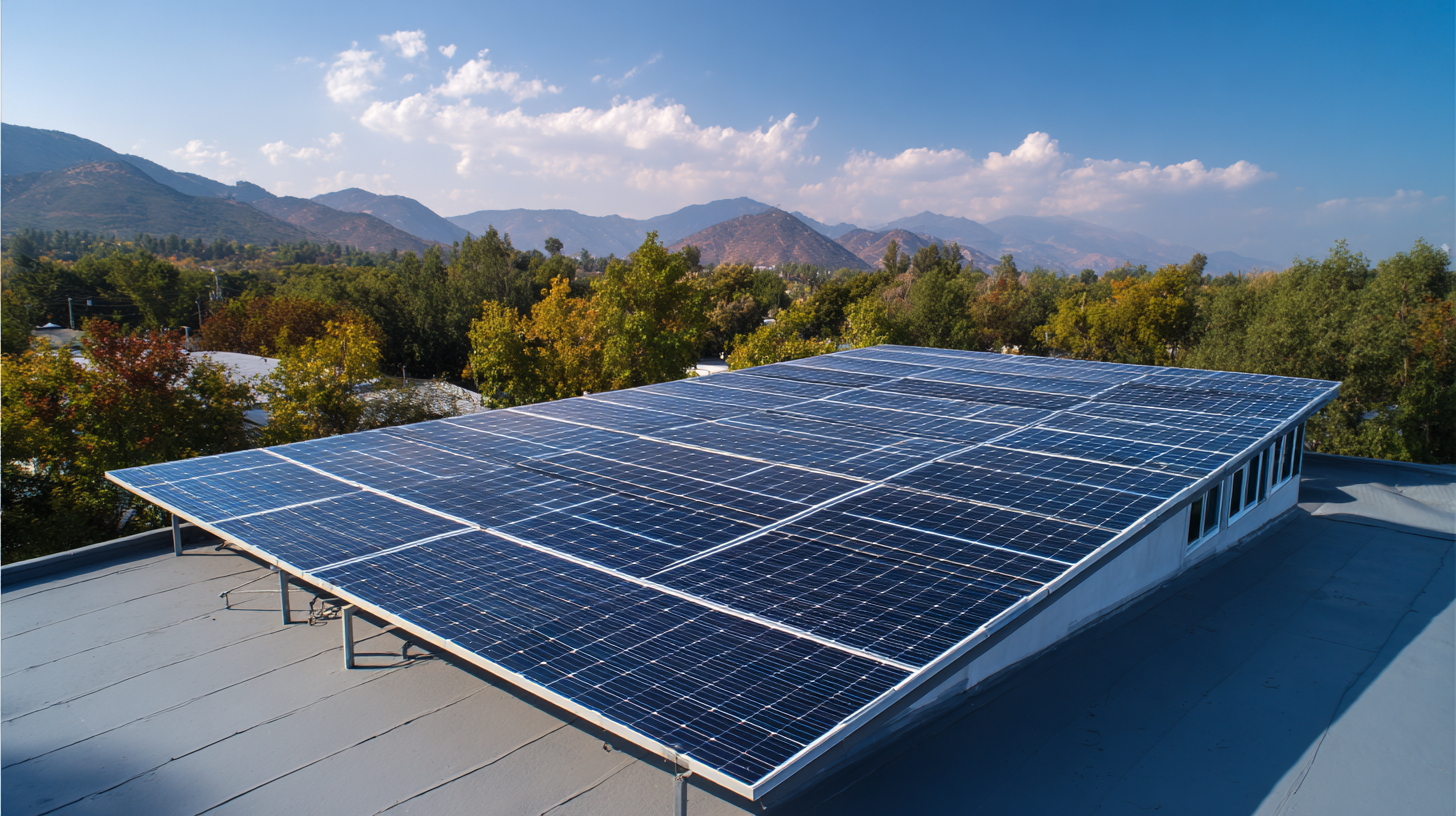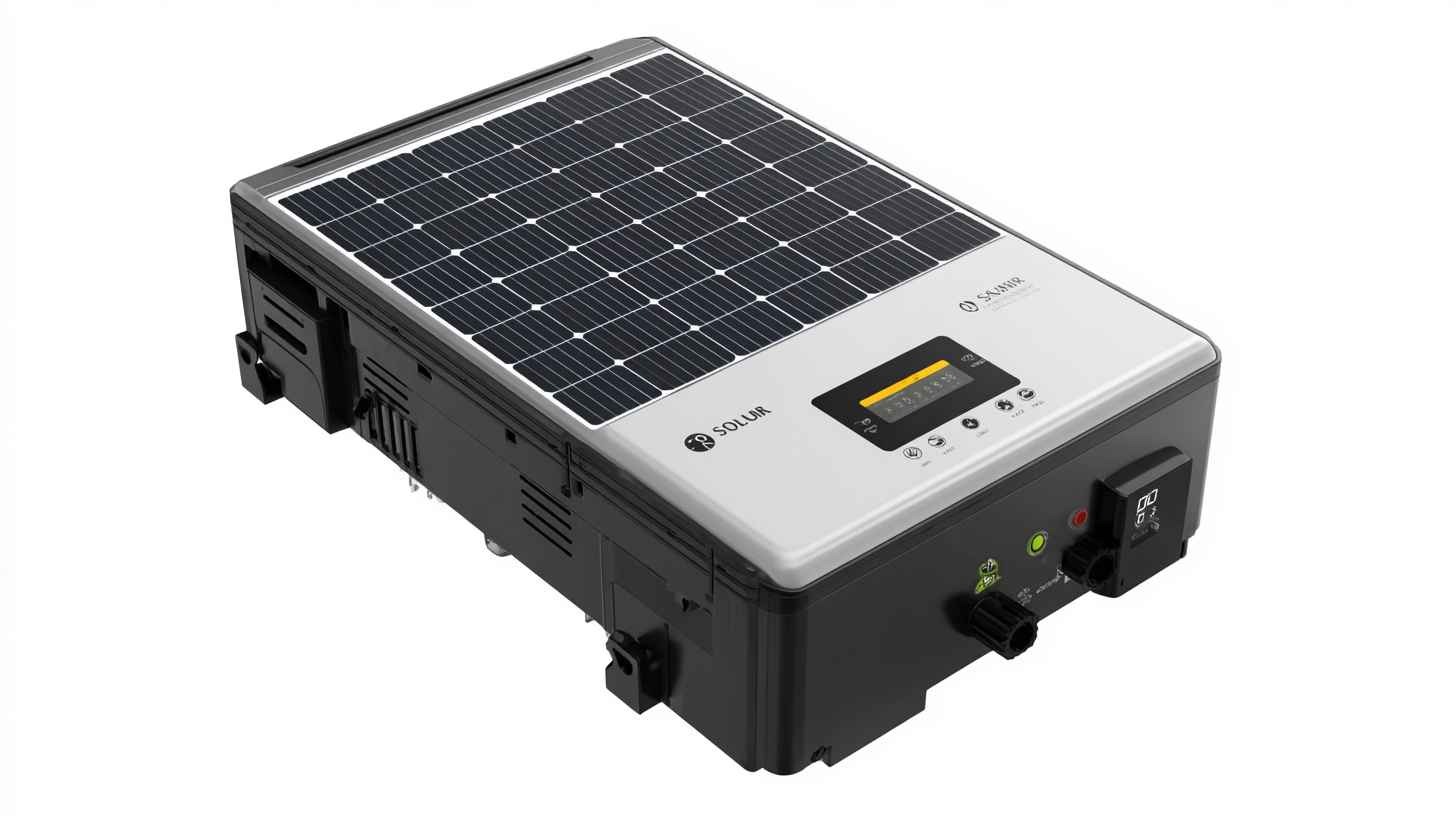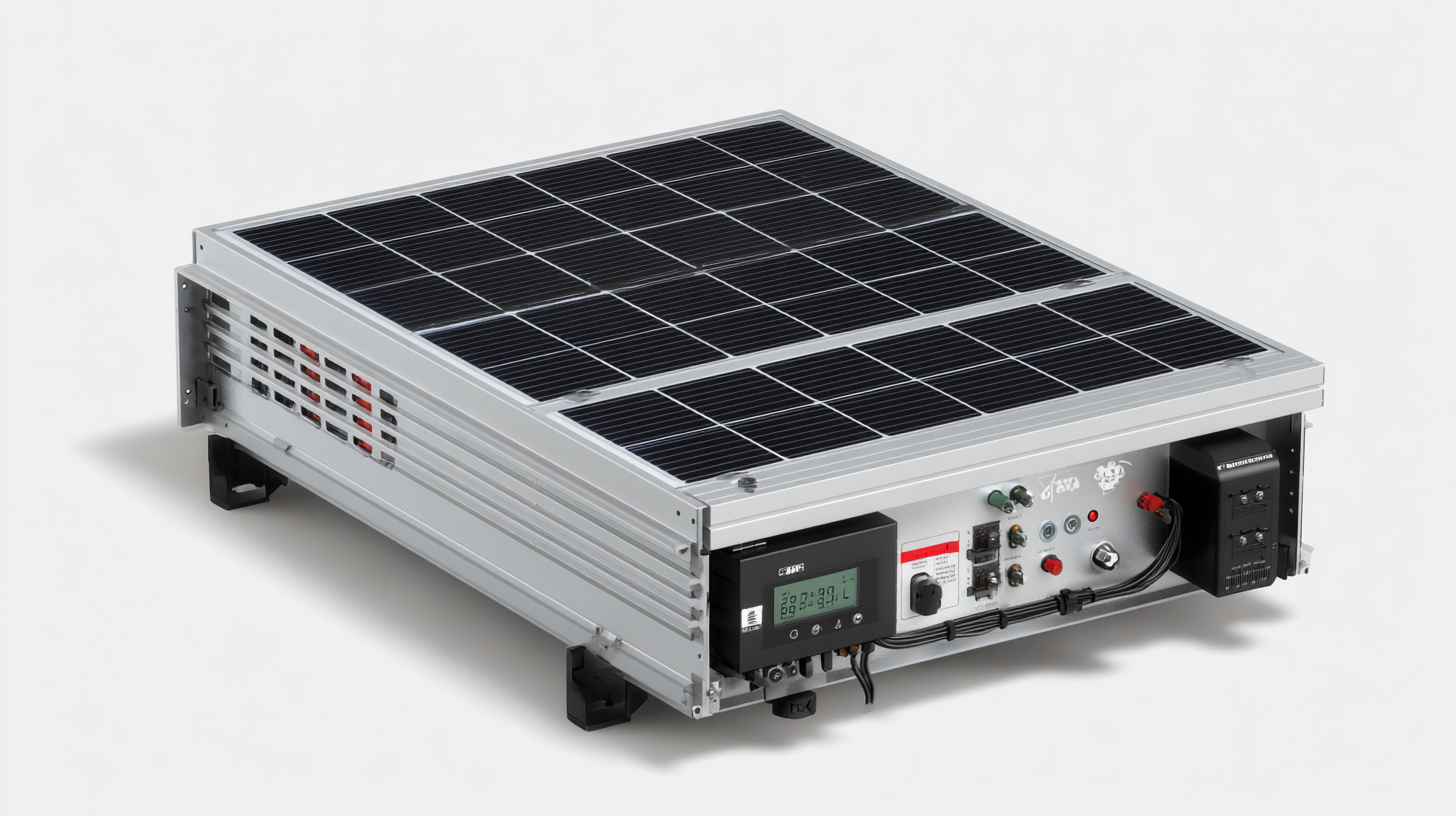ALL PRODUCTS
- Solar Panel
- Hybrid Inverter
- Lithium Battery
GSB SOLAR LITHIUM BATTERIES
- Gel Battery
- Solar Street Lights
- Pump Inverter
 Choosing the right solar panel inverter is a critical decision for anyone looking to harness the power of solar energy effectively. With various types of inverters available on the market, it can be challenging to determine which one best suits your specific needs. In this ultimate guide, we will explore the different options for solar panel inverters, focusing on key features, efficiency ratings, and compatibility with various solar systems. Whether you're a homeowner looking to reduce your energy bills or a business striving for sustainability, understanding how to select the best solar panel inverter can significantly impact your energy production and overall investment. Join us as we delve into the essential criteria that will help you make an informed decision tailored to your energy goals.
Choosing the right solar panel inverter is a critical decision for anyone looking to harness the power of solar energy effectively. With various types of inverters available on the market, it can be challenging to determine which one best suits your specific needs. In this ultimate guide, we will explore the different options for solar panel inverters, focusing on key features, efficiency ratings, and compatibility with various solar systems. Whether you're a homeowner looking to reduce your energy bills or a business striving for sustainability, understanding how to select the best solar panel inverter can significantly impact your energy production and overall investment. Join us as we delve into the essential criteria that will help you make an informed decision tailored to your energy goals.
When it comes to selecting a solar panel inverter, understanding the different types available can significantly impact your solar energy system's efficiency and performance. The most common types are string inverters, microinverters, and power optimizers. String inverters connect multiple solar panels in series, making them a cost-effective choice for larger systems where shading is minimal. However, their performance can be hindered if one panel experiences shading or malfunction.
Microinverters, on the other hand, are installed on each panel individually. This allows them to operate independently, optimizing energy production even if some panels face shading or differing orientations. While they tend to be more expensive upfront, microinverters can enhance overall system efficiency and provide better monitoring capabilities. Power optimizers blend the benefits of both, working alongside string inverters to maximize the output of each panel without the complexity of microinverters. By assessing your specific needs, including budget, installation space, and potential shading, you can make a more informed decision on which inverter type suits your solar energy system best.
This bar chart illustrates the efficiency ratings of different types of solar panel inverters available on the market. Understanding these ratings can help you make an informed decision when selecting an inverter that suits your solar needs.
When selecting a solar inverter for your home, there are several key factors to consider that can significantly affect your system's performance and efficiency. First, it's crucial to evaluate the inverter's capacity and compatibility with your solar panel setup. The inverter should be able to handle the peak power output from your solar panels while also being compatible with their voltage and current specifications. This ensures that your system operates at optimal efficiency, maximizing the energy harvested from sunlight.

Another important consideration is the inverter's reliability and warranty. Since inverters are pivotal components of your solar energy system, it’s essential to choose high-quality products that come with robust warranties. This can safeguard your investment and ensure minimal downtime. Additionally, consider the inverter's features, such as monitoring capabilities and whether it supports grid connection or battery storage options. By carefully analyzing these factors, you can select a solar inverter that meets your energy needs and enhances your renewable energy experience.
When selecting a solar panel inverter, one of the most critical decisions is whether to opt for a pure sine wave inverter or a modified sine wave inverter. Pure sine wave inverters output a clean, smooth electrical wave that closely resembles the power supplied by utility companies. This type of inverter is ideal for sensitive electronics and appliances, such as computers and medical devices, which require a stable power input. According to a report by the U.S. Department of Energy, devices powered by pure sine wave inverters experience significantly lower failure rates and increased longevity, with some estimates suggesting a reduction in energy waste by up to 30%.
In contrast, modified sine wave inverters are more affordable and adequate for simple devices, such as lights and fans. However, they can lead to overheating and the potential reduction in efficiency for sensitive equipment. A study from the National Renewable Energy Laboratory found that while modified sine wave inverters can support basic residential needs, they may cause electronic devices to operate less efficiently, resulting in approximately 20% higher energy consumption over time. This data emphasizes the importance of considering your specific power needs—investing in a pure sine wave inverter can prove more economical in the long run, especially for homes reliant on high-tech electronics.
| Inverter Type | Waveform Output | Cost (USD) | Efficiency (%) | Best For |
|---|---|---|---|---|
| Pure Sine Wave | Smooth and consistent | $800 - $1,500 | 90% - 95% | Sensitive electronics, home appliances |
| Modified Sine Wave | Stepped output | $150 - $500 | 80% - 85% | Basic appliances, power tools |
When selecting a solar panel inverter, understanding inverter efficiency ratings is paramount for optimizing solar performance. Inverter efficiency refers to the ratio of the output power to the input power, providing a measure of how well the inverter converts solar energy into usable electricity. Typically expressed as a percentage, a higher efficiency rating indicates that less energy is lost during conversion. It’s crucial to choose inverters with efficiency ratings above 95% to ensure that your solar energy system operates at its full potential.
Moreover, inverter efficiency impacts not only energy production but also the overall return on investment. For example, if an inverter consistently operates at a lower efficiency rating, homeowners may see decreased energy output, leading to higher utility bills and extended payback periods. Additionally, understanding power limitations and how they relate to efficiency ratings can guide consumers in selecting the right inverter capacity that matches their solar array. Evaluating different manufacturers and their efficiency claims can help you make an informed decision, ensuring that your final choice aligns with your energy needs and sustainability goals.
When selecting a solar panel inverter, the warranty and after-sales support provided by the manufacturer play pivotal roles in safeguarding your investment. According to the Solar Energy Industries Association (SEIA), a reliable inverter is essential since it can account for up to 20% of a solar system's overall cost. Therefore, considering a product that offers a robust warranty—typically ranging from 5 to 12 years—is crucial. When a company stands behind their product with comprehensive coverage, it not only reflects confidence in their technology but also ensures peace of mind for consumers.
 Tips: Always verify if the warranty covers parts and labor, as some companies may have limitations that could lead to unexpected costs in the event of a malfunction. Additionally, reliable after-sales support contributes significantly to a seamless customer experience. According to a recent report from EnergySage, customers with responsive support teams experience 30% less downtime during inverter issues, highlighting the importance of customer service.
Tips: Always verify if the warranty covers parts and labor, as some companies may have limitations that could lead to unexpected costs in the event of a malfunction. Additionally, reliable after-sales support contributes significantly to a seamless customer experience. According to a recent report from EnergySage, customers with responsive support teams experience 30% less downtime during inverter issues, highlighting the importance of customer service.
Furthermore, investing in an inverter with extensive after-sales support can lead to long-term savings through better performance monitoring and maintenance. Look for manufacturers that offer comprehensive support services, including timely troubleshooting and regular updates, which can optimize your solar system's efficiency and extend its lifespan. This diligence may significantly enhance your solar experience, turning a substantial investment into lasting savings.






